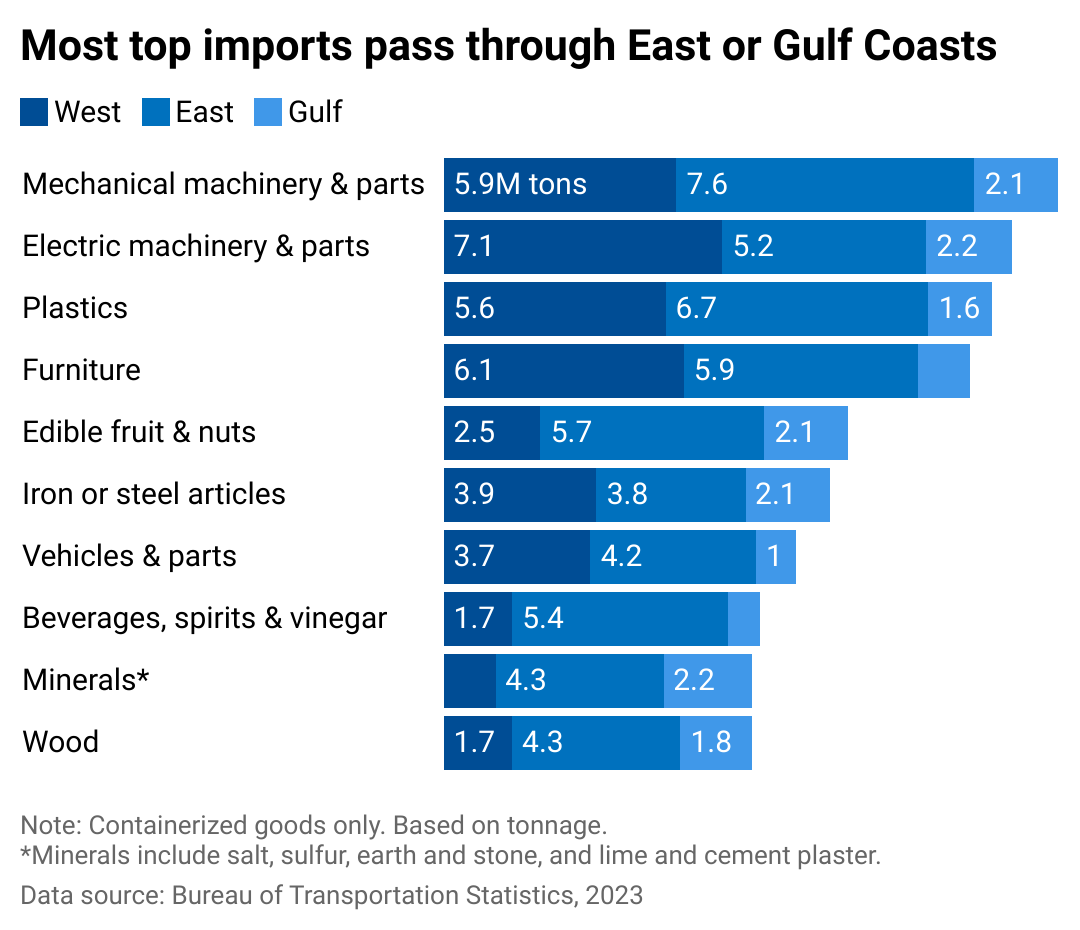Sven Hansche // Shutterstock On Oct. 1, thousands of dockworkers with the International Longshoremen’s Association, the union overseeing dockworkers across East Coast and Gulf Coast ports in the U.S., went on strike. Forecasts warned it could cost the U.S. economy billions of dollars a day and cause supply chain disruptions at a time when retailers are stocking up for the holiday season. However, within three days, the strike had been suspended, and goods ranging from fruit to furniture were again being moved in and out of the ports, which account for over half of all container imports to the U.S. While the strike’s short length may have caused a sigh of relief among supply chain managers, it still left ripple effects on U.S. trade. Truck Parking Club examined data from the Bureau of Transportation Statistics to uncover the impact of the dockworkers strike on the supply chain. “The U.S. port strike has ended, but the impacts are far from over,” Mia Ginter, director of North American Ocean Shipping at the logistics company C.H. Robinson, told Supply Chain Dive. “A week of disruption typically leads to at least a month of delays at the ports, and these delays increase as you move inland.” Fortunately, retailers’ bulking up on inventories and the stoppage’s quick resolution may have helped avoid the worst outcomes for holiday shoppers. Even so, read on to understand how this interruption in operations works its way up to consumers. Delays were mostly avoided
What a brief port strike on the East Coast means for your holiday shopping















